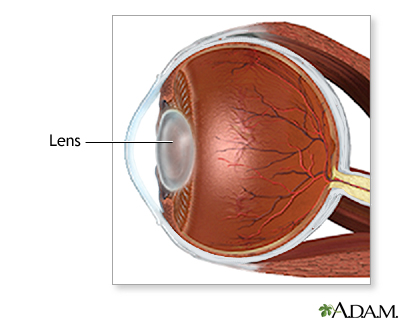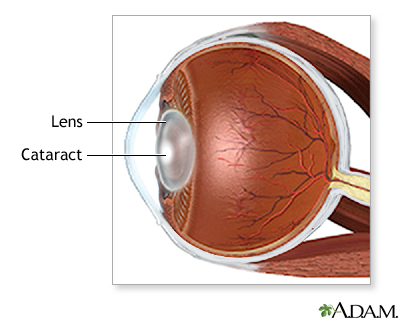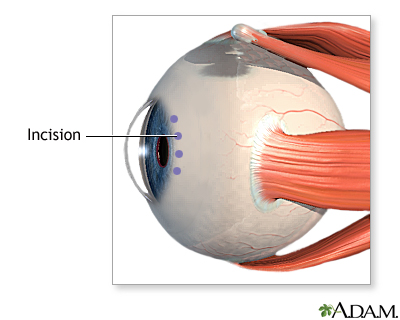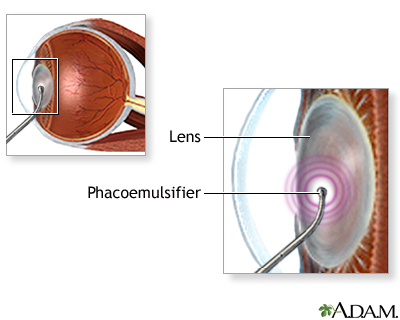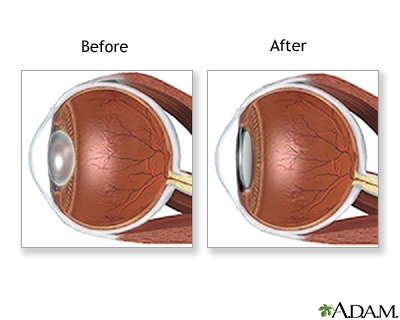Cataract surgery
| Normal anatomy |
The lens of the eye is normally clear. A cataract develops if the lens becomes cloudy, usually as you get older.
|
| Indications |
Surgery is usually recommended for people who have vision problems caused by the cataract.
|
| Procedure, part 1 |
|
Two procedures may be used to treat cataracts. In the manual extraction procedure, a small incision is made at the edge of the outer lining of the eye (cornea). The lens is then removed and replaced with an artificial lens.
|
| Procedure, part 2 |
|
The other, more common, procedure is called phacoemulsification. This involves inserting a needle through a small incision on the eye. The end of the needle produces sound waves. The sound waves break up the lens, which is then sucked out through the needle. an artificial lense is then placed in the eye. This procedure requires a smaller incision than the manual extraction procedure.
|
| Aftercare |
|
Cataract surgery usually works very well. The operation has few risks, the pain and recovery period are short, and your sight is usually greatly improved. Ninety-five percent or more of all cataract surgeries result in improved vision. |

|
Review Date:
12/22/2011
Reviewed By:
Harvey Simon, MD, Editor-in-Chief, Associate Professor of Medicine, Harvard Medical School; Physician, Massachusetts General Hospital. |
The information provided herein should not be used during any medical emergency or for the diagnosis or treatment of any medical condition. A licensed medical professional should be consulted for diagnosis and treatment of any and all medical conditions. Links to other sites are provided for information only -- they do not constitute endorsements of those other sites. © 1997-
A.D.A.M., Inc. Any duplication or distribution of the information contained herein is strictly prohibited.



